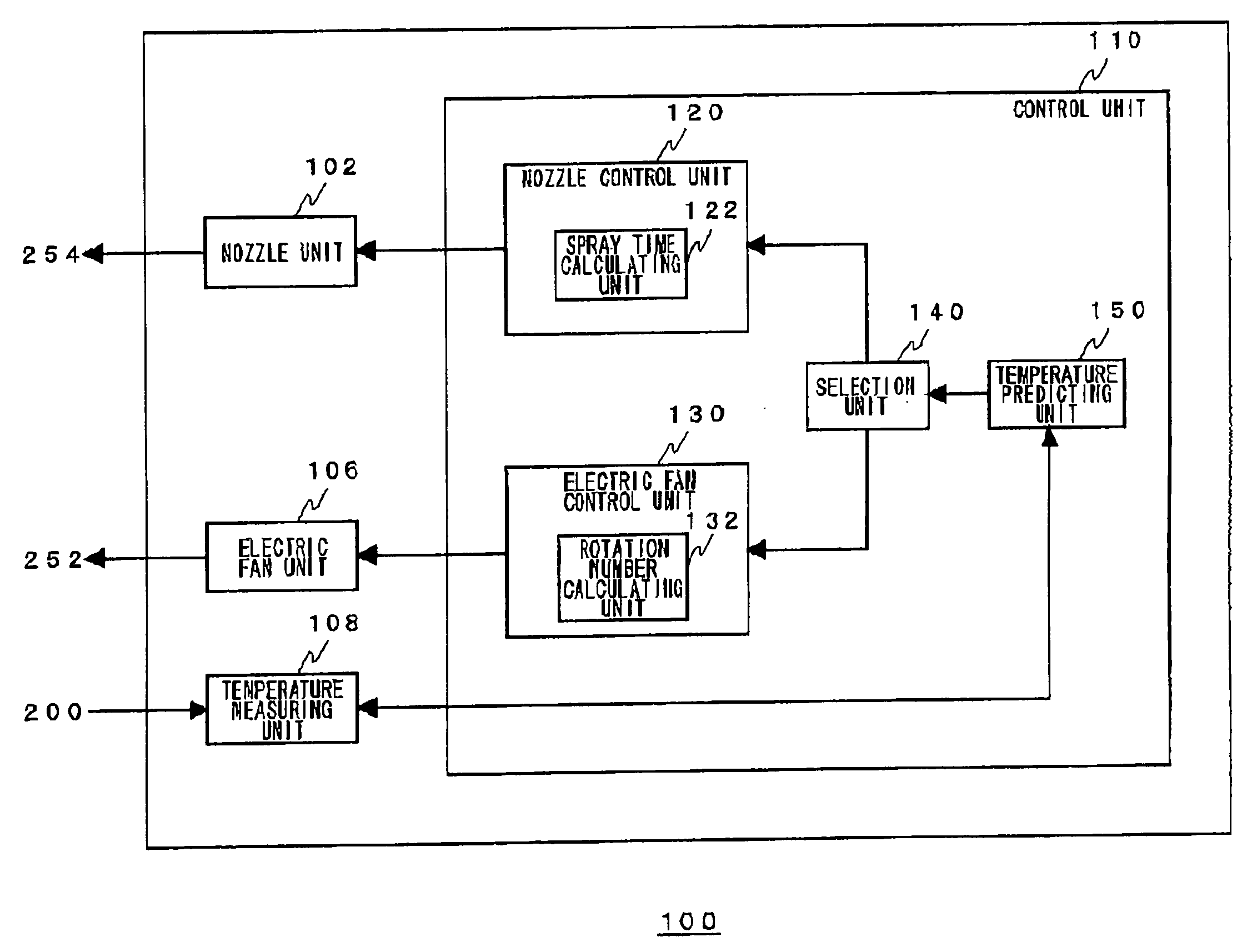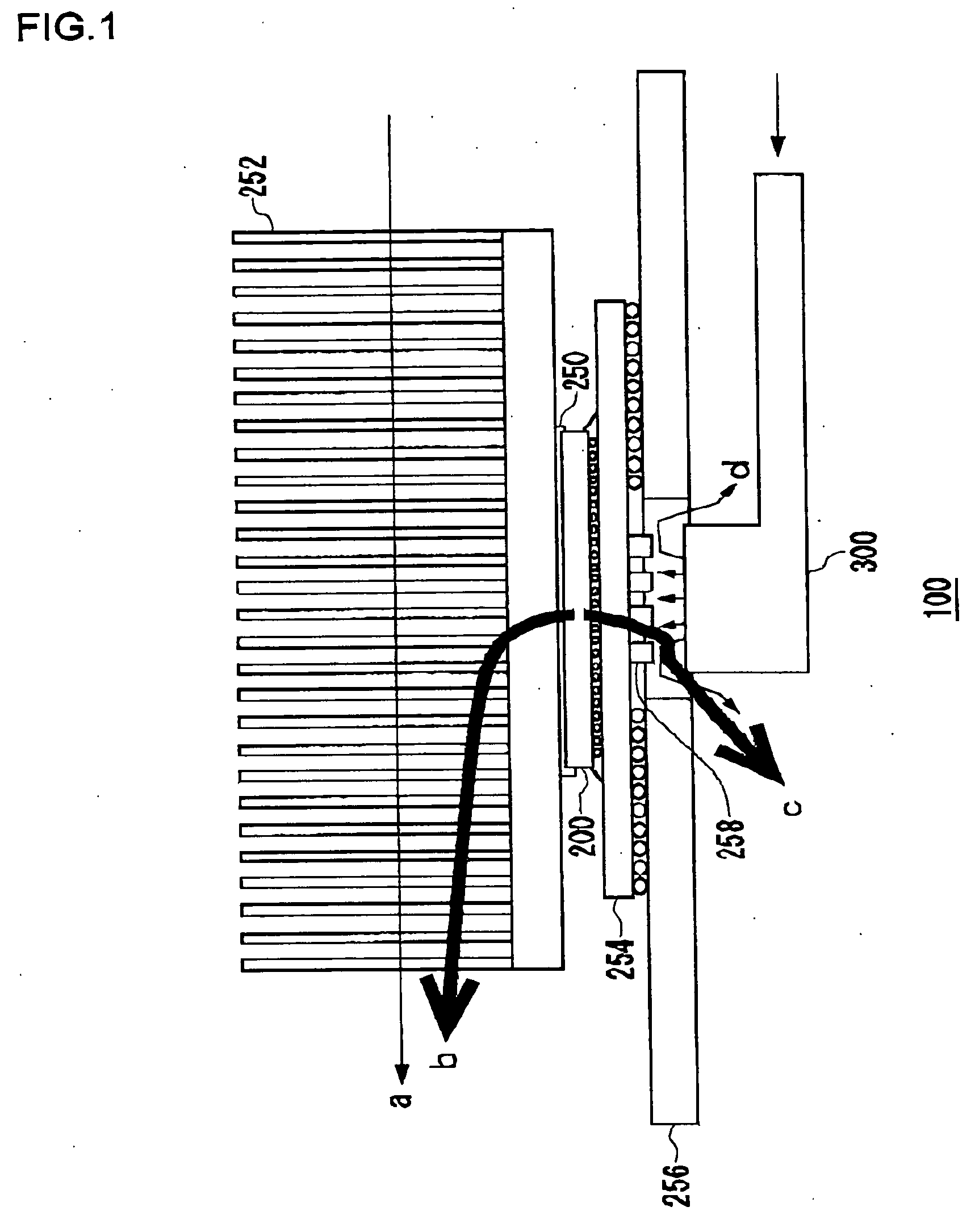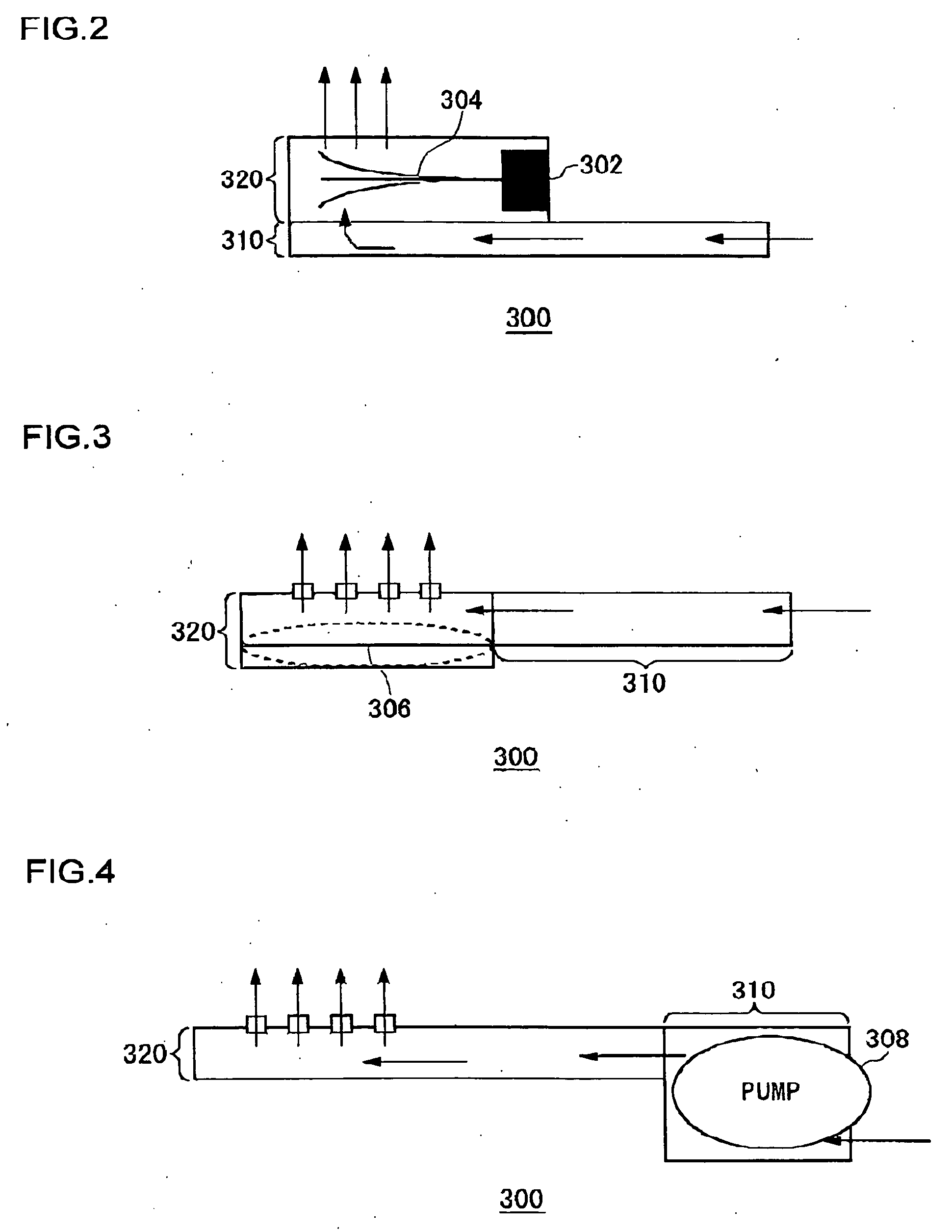Electronic device cooling apparatus and method for cooling electronic device with temperature prediction
a technology for electronic devices and cooling apparatuses, applied in the direction of domestic cooling apparatus, semiconductor/solid-state device details, instruments, etc., can solve the problems of difficulty in efficiently cooling electronic devices, increased power consumption and noise of fans, and poor time response of temperature changes of the foregoing electric fans and heat sinks. to achieve the effect of effectively cooling an electronic devi
- Summary
- Abstract
- Description
- Claims
- Application Information
AI Technical Summary
Benefits of technology
Problems solved by technology
Method used
Image
Examples
first embodiment
[0066] A first embodiment will deal with the case where a plurality of cooling mechanisms having different time responses are used effectively depending on predicted temperature variations. FIG. 7 is a flowchart showing the process in which the electronic device cooling apparatus 100 according to the first embodiment cools the electronic device 200. The temperature predicting unit 150 predicts the temperature of the electronic device 200 after the period Δt (S10). The selection unit 140 determines whether this predicted temperature exceeds a predetermined threshold or not (S12). This predetermined threshold is a value determined arbitrary by the designer, in accordance with the performance and the use environment of the electronic device 200. If the temperature exceeds this threshold, the proper operation of the electronic device 200 will no longer be guaranteed. Hereinafter, this threshold will be referred to as “first threshold”. If the predicted temperature is lower than the firs...
second embodiment
[0071] In the configuration of a second embodiment, the nozzle unit 102, the nozzle control unit 120, and the selection unit 140 may be omitted from the electronic device cooling apparatus 100 shown in FIG. 5. Description will be given below, assuming a typical cooling mechanism with an electric fan.
[0072]FIG. 8 is a flowchart showing the process in which the electronic device cooling apparatus according to the second embodiment cools the electronic device. Initially, the temperature predicting unit 150 sets the electric fan control unit 130 with a target control temperature Td of the electronic device 200 (S30). For example, the setting is 60° C. The temperature predicting unit 150 also passes the current temperature measured by the temperature measuring unit 108 to the electric fan control unit 130. The rotation number calculating unit 132 multiplies the difference between the set target control temperature Td and the current temperature Tt by a predetermined feedback gain k, the...
PUM
 Login to View More
Login to View More Abstract
Description
Claims
Application Information
 Login to View More
Login to View More - R&D
- Intellectual Property
- Life Sciences
- Materials
- Tech Scout
- Unparalleled Data Quality
- Higher Quality Content
- 60% Fewer Hallucinations
Browse by: Latest US Patents, China's latest patents, Technical Efficacy Thesaurus, Application Domain, Technology Topic, Popular Technical Reports.
© 2025 PatSnap. All rights reserved.Legal|Privacy policy|Modern Slavery Act Transparency Statement|Sitemap|About US| Contact US: help@patsnap.com



